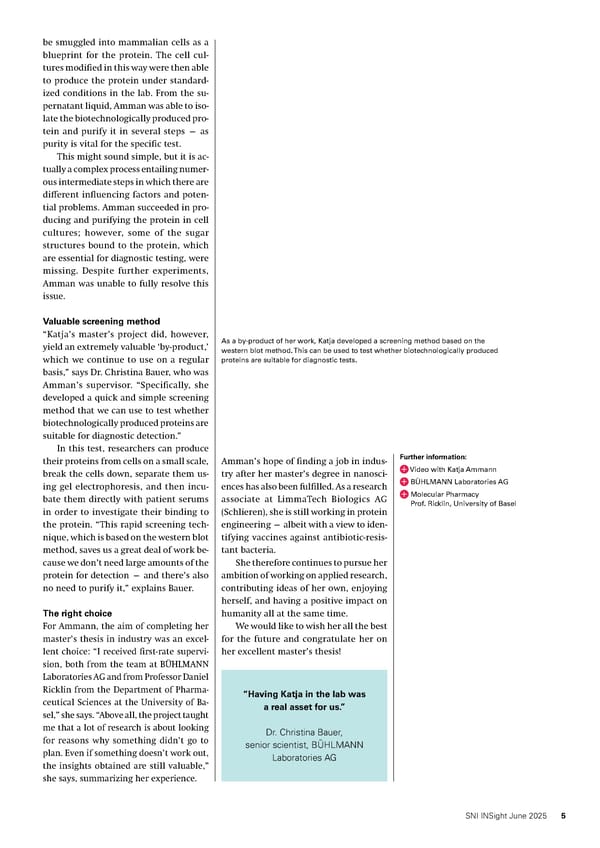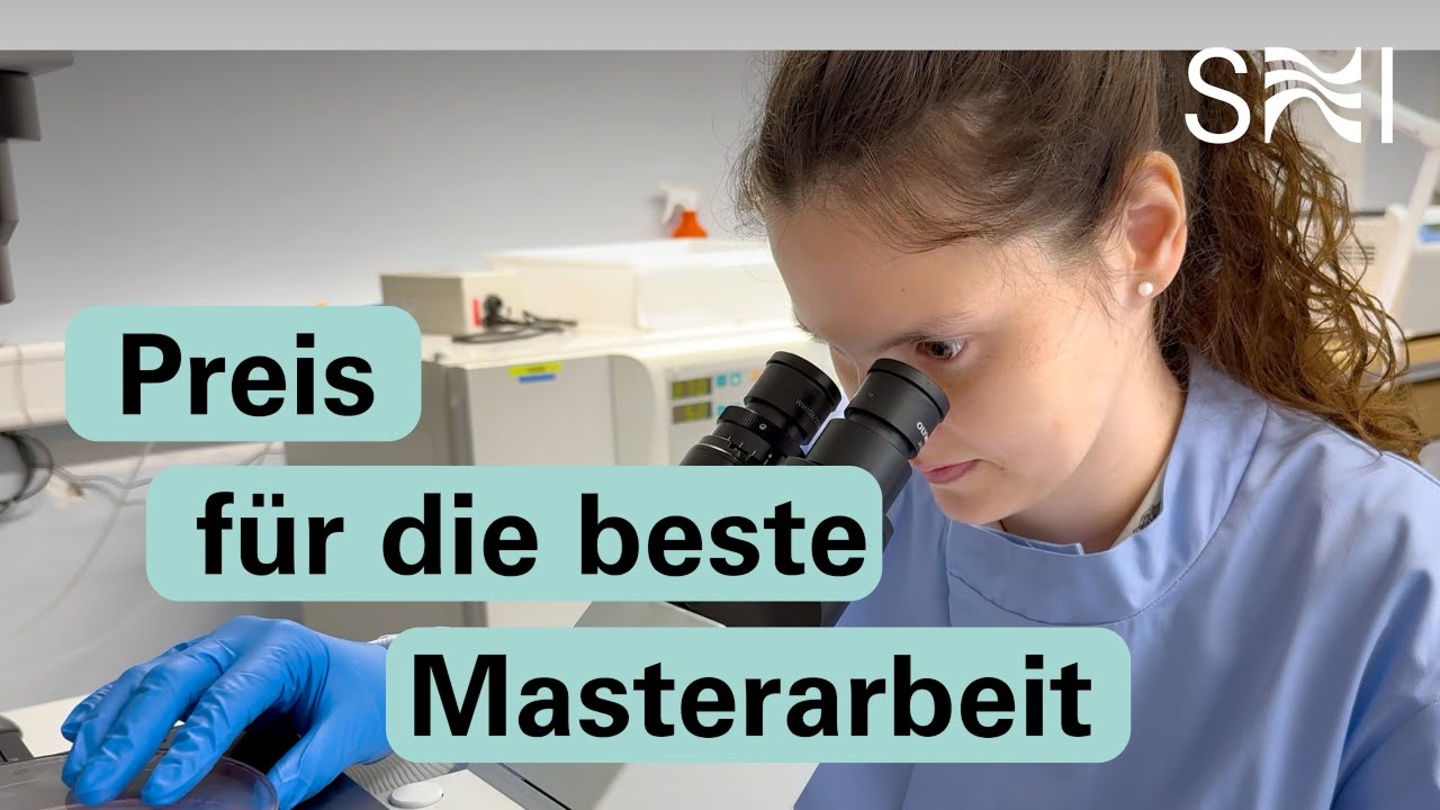be smuggled into mammalian cells as a blueprint for the protein. The cell cul- tures modified in this way were then able to produce the protein under standard- ized conditions in the lab. From the su- pernatant liquid, Amman was able to iso- late the biotechnologically produced pro- tein and purify it in several steps — as purity is vital for the specific test. This might sound simple, but it is ac- tually a complex process entailing numer- ous intermediate steps in which there are different influencing factors and poten- tial problems. Amman succeeded in pro- ducing and purifying the protein in cell cultures; however, some of the sugar structures bound to the protein, which are essential for diagnostic testing, were missing. Despite further experiments, Amman was unable to fully resolve this issue. Valuable screening method “Katja’s master’s project did, however, yield an extremely valuable ‘by-product,’ which we continue to use on a regular basis,” says Dr. Christina Bauer, who was Amman’s supervisor. “Specifically, she developed a quick and simple screening method that we can use to test whether biotechnologically produced proteins are suitable for diagnostic detection.” In this test, researchers can produce their proteins from cells on a small scale, break the cells down, separate them us- ing gel electrophoresis, and then incu- bate them directly with patient serums in order to investigate their binding to the protein. “This rapid screening tech- nique, which is based on the western blot method, saves us a great deal of work be- cause we don’t need large amounts of the protein for detection — and there’s also no need to purify it,” explains Bauer. The right choice For Ammann, the aim of completing her master’s thesis in industry was an excel- lent choice: “I received first-rate supervi- sion, both from the team at BÜHLMANN Laboratories AG and from Professor Daniel Ricklin from the Department of Pharma- ceutical Sciences at the University of Ba- sel,” she says. “Above all, the project taught me that a lot of research is about looking for reasons why something didn’t go to plan. Even if something doesn’t work out, the insights obtained are still valuable,” she says, summarizing her experience. Amman’s hope of finding a job in indus- try after her master’s degree in nanosci- ences has also been fulfilled. As a research associate at LimmaTech Biologics AG (Schlieren), she is still working in protein engineering — albeit with a view to iden- tifying vaccines against antibiotic-resis- tant bacteria. She therefore continues to pursue her ambition of working on applied research, contributing ideas of her own, enjoying herself, and having a positive impact on humanity all at the same time. We would like to wish her all the best for the future and congratulate her on her excellent master’s thesis! As a by-product of her work, Katja developed a screening method based on the western blot method. This can be used to test whether biotechnologically produced proteins are suitable for diagnostic tests. “Having Katja in the lab was a real asset for us.” Dr. Christina Bauer, senior scientist, BÜHLMANN Laboratories AG Further information: Video with Katja Ammann BÜHLMANN Laboratories AG Molecular Pharmacy Prof. Ricklin, University of Basel 5 SNI INSight June 2025
 SNI Insight - 2025 June Page 4 Page 6
SNI Insight - 2025 June Page 4 Page 6
